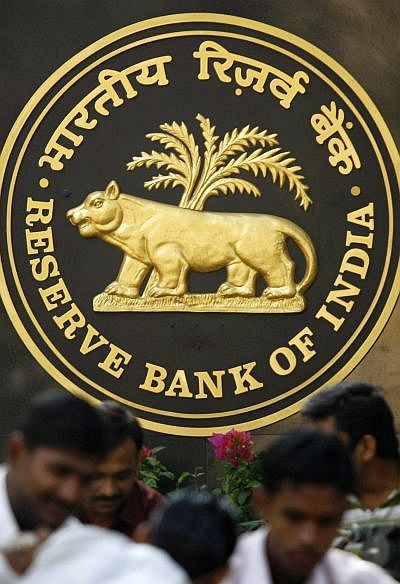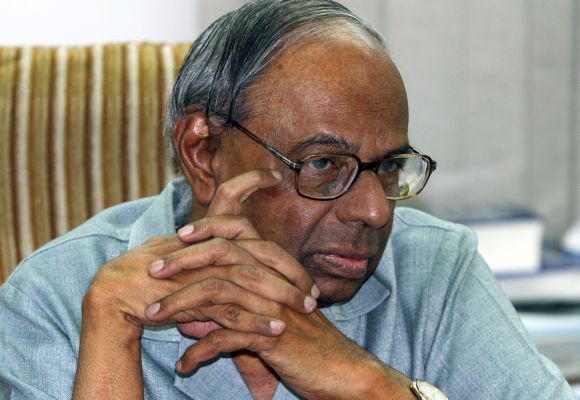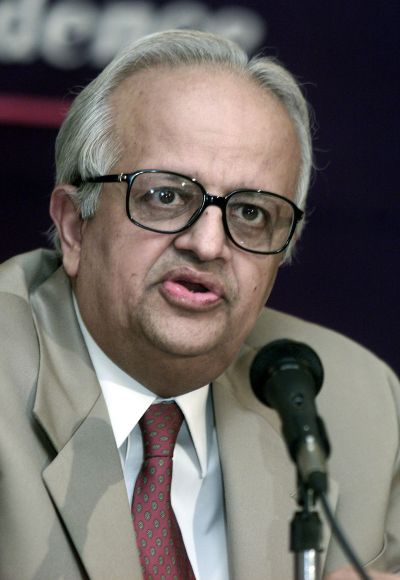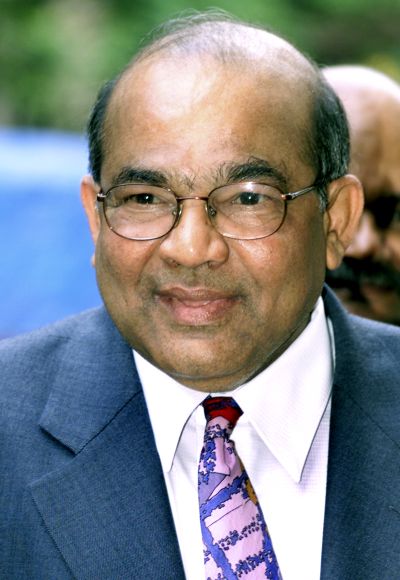 | « Back to article | Print this article |
Poll: Is Subbarao the 'worst performing' RBI Governor?
D Subbarao, who completes his five-year term as RBI governor on September 5, was recently criticised by Arvind Panagariya, professor at Columbia University and a noted economist, on the ground that the central bank did not build foreign exchange reserves when the rupee was appreciating in 2009-10.
Business Standard takes a look at the performance of RBI governors since 1990.
Click NEXT to see the performance of RBI Governors…
Poll: Is Subbarao the 'worst performing' RBI Governor?
S Venkitaramanan
Tenure: Dec 22, 1990 - Dec 21 1992
Interest movement: Rose from 10 per cent to 12 per cent
Rupee vs. dollar: Rupee weakened from 17.50 to 22.69
Foreign exchange reserve (as % of GDP): Went up from 2.15 per cent to 3.89 per cent
GDP growth: Dipped from 5.29 per cent to 1.43 per cent
Annual inflation (WPI): Moved up from 10.30 per cent to 13.70 cent
He was the eighteenth RBI Governor, who had worked as Finance Secretary for the Government of India.
The country faced difficulties related to the external sector during his tenure. His adroit management saw the country tide over the balance of payments crisis.
His term also saw India adopt the IMF’s stabilisation programme where the rupee underwent a devaluation and the launch of the programme of economic reforms.
Click NEXT to read more…
Poll: Is Subbarao the 'worst performing' RBI Governor?
C Rangarajan
Tenure: Dec 22, 1992 to Nov 21 1997
Interest movement: Remained stagnant at 12 per cent
Rupee vs. dollar: Rupee weakened from 22.69 to 35.43
Foreign exchange reserve (as % of GDP): Increased from 3.89 per cent to 7.29 per cent
GDP growth: Saw a massive rise from 1.43 per cent to 7.97 per cent
Annual inflation (WPI): Moved down from 13.7 per cent to 4.6 per cent
Currently, the chairman of the Prime Minister’s Economic Advisory Council, Dr. C Rangarajan was a professional economist.
Prior to his appointment as the Governor, he held charge as RBI's Deputy Governor for over a decade.
He was also a member of the Planning Commission and a member of the Tenth Finance Commission.
His tenure as Governor saw unprecedented central bank activism to put in place a comprehensive set of measures to strengthen and improve the financial sector. New institutions and instruments were introduced for this purpose. He is also credited with establishing a unified exchange rate.
In the field of monetary policy, his tenure saw the historic memorandum signed between the Bank and the Government whereby a cap was put on the automatic finance by the Bank to the Government in the form of ad hoc treasury bills.
Click NEXT to read more…
Poll: Is Subbarao the 'worst performing' RBI Governor?
Bimal Jalan
Tenure: Nov 22, 1997 - Sept 5, 2003
Interest movement: Halved to 6 per cent from 12 per cent
Rupee vs. dollar: Rupee weakened from 35.43 to 48.6
Foreign exchange reserve (as % of GDP): Rose further from 7.29 per cent to 15.46 per cent
GDP growth: Slowed from 7.97 per cent to 3.99 per cent
Annual inflation (WPI): Moved down from 4.6 per cent to 3.4 per cent
He is one of the longest serving RBI chiefs. Prior to becoming the Governor, he had served as the Chief Economic Advisor to the Government of India, Banking Secretary, Finance Secretary, Member Secretary of Planning Commission, and Chairman of the Economic Advisory Council to the Prime Minister.
He had also represented India on the Executive Boards of the IMF and the World Bank.
During his tenure, India weathered the Asian Crisis and emerged stronger than before. He effectively implemented the liberalisation process started by his predecessor.
He worked towards demystifying the monetary policy process and central bank communications marked a perceived shift towards transparency.
He also took a slew of measures to strengthen the banking sector, establish new institutions and introduce new instruments.
Click NEXT to read more…
Poll: Is Subbarao the 'worst performing' RBI Governor?
Y. Venugopal Reddy
Tenure: Sep 6, 2003 - Sept 5, 2008
Interest movement: Remained at 6 per cent
Rupee vs. dollar: Rupee strengthen to 41.35 from 48.6
Foreign exchange reserve (as % of GDP): Increased from 15.46 per cent to 27.02 per cent
GDP growth: Went up to 9.32 per cent from 3.99 per cent
Annual inflation (WPI): Moved up from 3.4 per cent to 4.7 per cent
Yaga Venugopal Reddy, the twenty-first Governor, was a member of the Indian Administrative Service. He has spent most of his career in the areas of finance and planning.
Reddy has made significant policy contributions in the areas of financial sector reforms; trade finance; monitoring of balance of payments and exchange rate; external commercial borrowings; centre-state financial relations; regional planning; and public enterprise reform and has been closely associated with institution building.
He has also served as Secretary (Banking) in Ministry of Finance, Additional Secretary, Ministry of Commerce, Joint Secretary in Ministry of Finance in Government of India, Principal Secretary, Government of Andhra Pradesh and had a six year tenure as Deputy Governor of the Reserve Bank of India.
Prior to his appointment as the Governor, Dr. Reddy was India's Executive Director on the Board of the International Monetary Fund.
Click NEXT to read more…
Poll: Is Subbarao the 'worst performing' RBI Governor?
D Subbarao
Tenure: Since Sept 6, 2008
Interest movement: Went up to 8.5 per cent from 6 per cent
Rupee vs. dollar: Rupee touched its new lows
Foreign exchange reserve (as % of GDP): Came down from 27.02 to 17.12
GDP growth: Slowed down to 4.96 per cent from 9.32 per cent
Annual inflation (WPI): Moved up from 4.7 per cent to 7.8 per cent
He was the Finance Secretary prior to becoming the 22nd Governor, and he is due to retire on Sep 4, 2013.
The year he took the reigns, Global Financial Crisis - one of the worst financial crisis since the Great Depression of 1930s - occured
Since the beginning of his tenure, the economy has been in the state of crisis due to global events. India’s growth started slowing down after a fantastic run during his predecessor’s service. Inflation rose consistently and so did the interest rates. Indian currencies touched an all-time low against dollar.
Analysts and economist criticise him for not taking enough measures to control the falling rupee but rather concentrating on the growth.
He is also said to have a mind of his own and is known to override opinion of his fellow members in the Technical Advisory Group on Monetary Policy.
Despite all this, Subbarao is credited with demystifying the working of RBI. He made efforts to present the complicated macro economic concept in a lucid manner in RBI publications. He took commendable steps in financial inclusion and financial literacy.
Subbarao has earlier been Secretary to the Prime Minister's Economic Advisory Council (2005-2007), lead economist in the World Bank (1999-2004), Finance Secretary to the Government of Andhra Pradesh (1993-98) and Joint Secretary in the Department of Economic Affairs, Ministry of Finance, Government of India (1988-1993).
Poll: Is Subbarao the 'worst performing' RBI Governor?
Who do you think is the best-performing RBI Governor?







